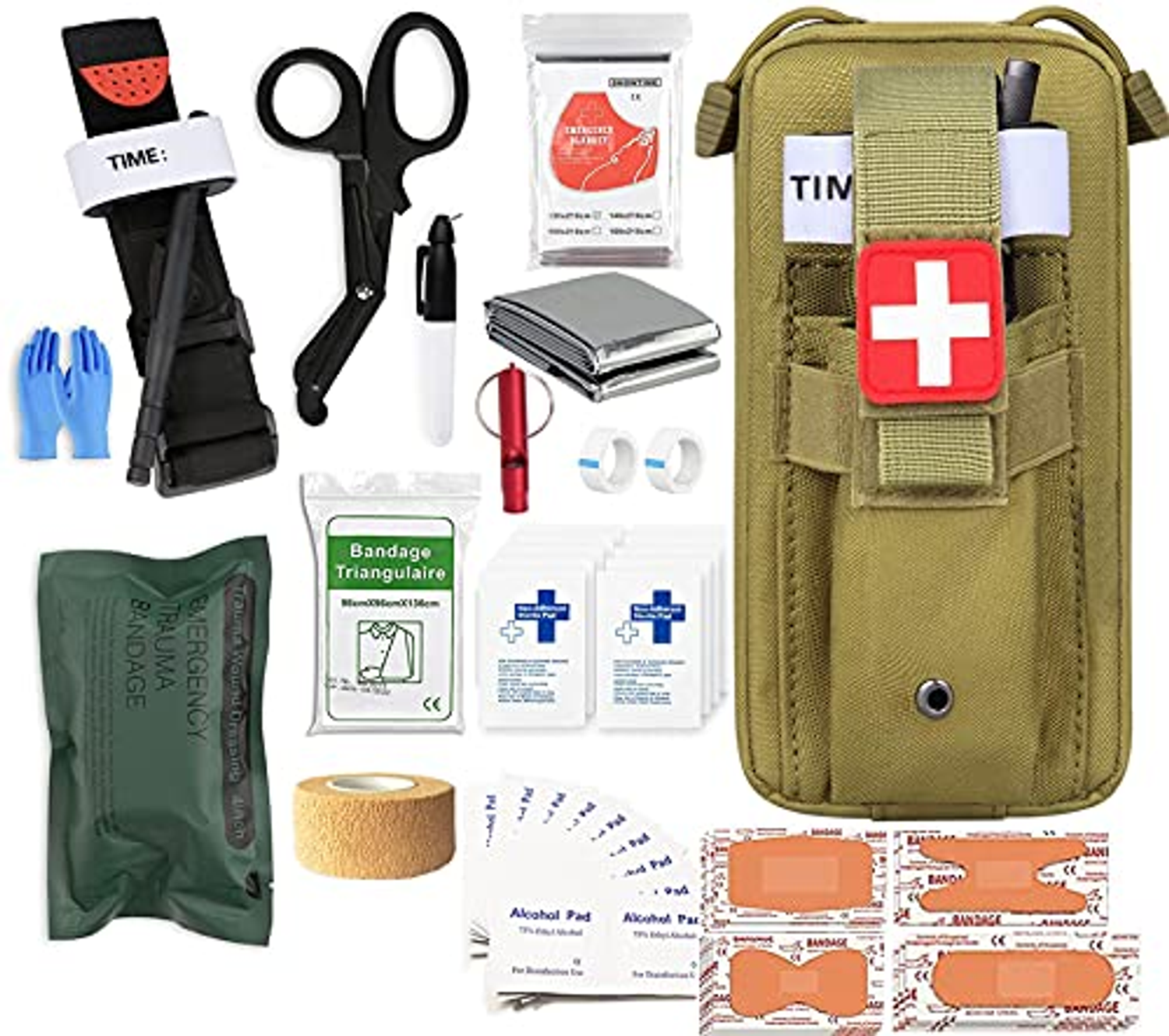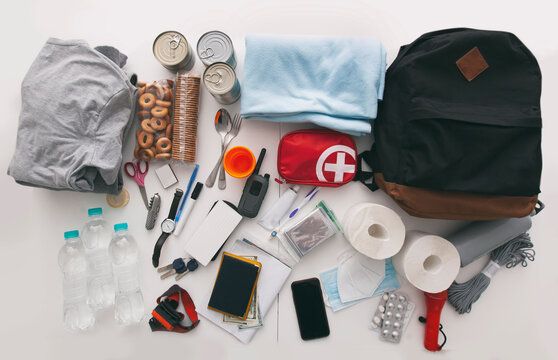
GET A QUOTE
When Should a First Aid Kit Be Restocked?
A well-stocked first aid kit is essential for handling everyday injuries, emergencies, or minor accidents. However, many people overlook the importance of regularly checking and restocking their kits. In this blog, we'll explore when you should restock your first aid kit, which supplies are most used, and why keeping it fully equipped can be crucial in a medical emergency.
Why It’s Important to Restock Your First Aid Kit
First aid kits are meant to provide immediate care in emergencies, but without proper supplies, they become ineffective. Bandages, antiseptic wipes, and pain relievers are frequently used items that quickly run out, while certain materials can expire, reducing their effectiveness. That's why it’s critical to restock your first aid kit regularly to ensure you're always prepared for any situation.
How Often Should You Restock Your First Aid Kit?
The frequency of restocking depends on how often the kit is used. For households, a general rule is to check your supplies every 3-6 months. However, workplaces or environments where first aid kits are used more frequently, such as schools or construction sites, should aim for monthly checks to ensure nothing is missing.
Signs That You Need to Restock
- Expired supplies: Medications, antiseptics, and ointments all have expiration dates. Expired products can lose their potency and might not work effectively when needed.
- Missing items: If you’ve recently used supplies like adhesive bandages or pain relievers, those should be replaced immediately.
- Damaged packaging: Items in torn or broken packaging may be compromised, reducing their effectiveness. Make sure all contents are in good condition.
Most Used First Aid Supplies You Should Always Have
Every first aid kit should have a core set of supplies that are frequently used in emergencies. It’s essential to identify which supplies you use most often and ensure they are regularly replenished.
Bandages and Dressings
- Adhesive bandages: Available in various sizes, adhesive bandages are among the most frequently used items in any first aid kit. From minor cuts to blisters, these are a must-have for quick wound care.
- Sterile gauze pads: Used for larger wounds, sterile gauze pads help in stopping bleeding and preventing infection.
- Medical adhesive tape: Essential for securing dressings or bandages, adhesive tape should always be on hand.
Antiseptics and Ointments
- Antiseptic wipes: These are used to clean wounds and prevent infection. Since they are frequently used, it’s important to always restock your first aid kit with enough wipes.
- Antibiotic ointments: Used for preventing infection in minor cuts, burns, and abrasions, this is one of the most used first aid supplies.
Medications
- Pain relievers: Ibuprofen or acetaminophen are critical in managing pain and reducing inflammation. These are often used and should be restocked regularly.
- Antihistamines: For treating allergic reactions, antihistamines are another staple of any first aid kit.
Specialized First Aid Supplies for Different Settings
The items you need to restock your first aid kit with may vary depending on the environment. For instance, a kit at home will differ from one at work or in your car.
At Home
In the home, kits should be prepared for common accidents such as cuts, burns, and allergic reactions. Here’s what should always be restocked:
- Burn cream: For minor burns from kitchen accidents.
- Tweezers: For removing splinters or debris from wounds.
- Cold packs: For managing swelling from falls or sprains.
Workplace First Aid Kits
Workplaces require more comprehensive kits to handle potential accidents:
- Eye wash solution: Particularly important for industries that handle chemicals.
- CPR masks: Useful in larger workplaces where employees might need immediate resuscitation.
Travel or Outdoor Kits
If you’re creating a first aid kit for traveling or outdoor activities like hiking, there are additional supplies you should include:
- Insect sting relief: Essential for outdoor environments where bug bites and stings are common.
- Elastic bandages: These are useful for sprains or strains during physical activities.
- Long-tail keyword: What supplies should be included in a workplace first aid kit?
How to Properly Restock Your First Aid Kit
The process of restocking a first aid kit requires attention to detail. Use a checklist to ensure you replace any missing or expired items and maintain an organized kit so supplies are easy to find during emergencies.
Step-by-Step Restocking Guide
- Take inventory: Start by laying out all the contents of your first aid kit and checking them against a pre-made checklist of essential supplies.
- Check expiration dates: Look for any expired products, such as ointments, medications, or antiseptics, and discard them.
- Replace missing items: Replenish supplies that are missing or have been used recently, such as bandages or pain relievers.
- Inspect the packaging: Ensure all packaging is intact, and replace any items that have been damaged or exposed to moisture.
- Organize the kit: Group similar items together (e.g., all wound care supplies in one section) to make it easier to find what you need during an emergency.
First Aid Kit Essentials You Might Be Missing
While most people focus on bandages and antiseptics, there are other important first aid supplies that are often overlooked when restocking. Don’t forget these key items when replenishing your kit:
- Thermometer: Essential for checking fevers in both adults and children.
- Scissors: Necessary for cutting gauze or adhesive tape.
- Alcohol swabs: Ideal for disinfecting tools like tweezers or scissors.
How to Store and Maintain Your First Aid Kit
Restocking your kit is just one part of maintaining it; proper storage is equally important. First aid kits should be kept in an accessible, dry, and cool place to prevent damage to the supplies. Here are a few tips on where and how to store your kit:
- At home: Keep your kit in an easy-to-reach location, such as the bathroom or kitchen, but away from direct sunlight and moisture.
- In the car: Ensure that your travel kit is in a waterproof container and stored securely, away from direct heat.
- At work: Kits should be easily accessible to all employees and stored in a central location.
Conclusion: Restocking Your First Aid Kit is Key to Safety
Knowing when and how to restock your first aid kit is critical in maintaining its effectiveness. From most used first aid supplies like bandages and antiseptics to often-overlooked essentials like scissors and thermometers, every item plays a vital role in managing emergencies. Regularly checking for expired supplies and replenishing what’s been used ensures you’re always ready for whatever comes your way.
If you're looking to restock or upgrade your first aid kit, RISEN Medical offers a wide range of high-quality first aid supplies, from basic essentials to specialized tools for both home and workplace kits. Make safety your top priority by ensuring your first aid kit is fully stocked and prepared for any emergency.


